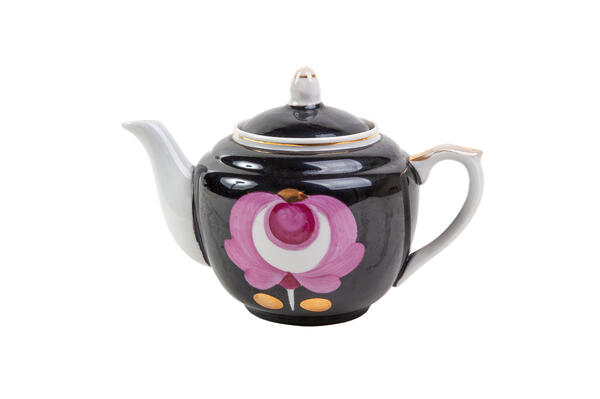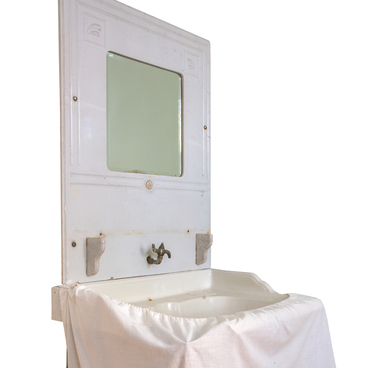The black teapot with a white faience neck is in the living room of the Memorial House-Museum of Mazhit Gafuri. In the poet’s family, it was used as a teapot and served together with a kettle with boiling water. This was characteristic of both Bashkir and Russian culture. In other countries, tea was poured straight from the teapot, as in Britain.
The teapot’s homeland is China. It was there that the method of brewing the drink with boiling water was invented. It is believed that teapots originated from ceramic caldrons, in which powdered tea was put and hot water was poured. They were already in use in the first millennium AD. As tea leaves were dried and turned into powder, the teapot was not needed. It was only when China started to use whole leaf tea at the end of the 14th century that the need for teapots arose. The first Chinese teapots were made of porous clay, which helped preserve the heat and aroma of the drink.
In Europe, they appeared in the 16th century, when tea was brought from Oriental countries. The first teapots were quite crude and could not compete with the Chinese products. However, two centuries later, European craftsmen discovered the secret of making porcelain and began mass production of tableware from this material, including teapots. In Europe, the ‘teapot’ acquired a greater volume than its Chinese counterpart. The spherical shape of the teapot also became traditional.
The first manufactory that made porcelain teapots opened in Meissen, Germany. In terms of quality, these products were almost as good, as Chinese teapots and were of great demand in European homes. A little later, teapots began to be made of silver. Tea sets made from the noble metal and richly decorated became a sign of high social status — only rich people bought them. Besides, the plasticity of silver allowed craftsmen to create teapots not only of spherical, but also of cylindrical, oval and rectangular shape. Tin was also used to make tea utensils. Pewter teapots were much cheaper than silver teapots and could be afforded by people with less money.
The teapot’s homeland is China. It was there that the method of brewing the drink with boiling water was invented. It is believed that teapots originated from ceramic caldrons, in which powdered tea was put and hot water was poured. They were already in use in the first millennium AD. As tea leaves were dried and turned into powder, the teapot was not needed. It was only when China started to use whole leaf tea at the end of the 14th century that the need for teapots arose. The first Chinese teapots were made of porous clay, which helped preserve the heat and aroma of the drink.
In Europe, they appeared in the 16th century, when tea was brought from Oriental countries. The first teapots were quite crude and could not compete with the Chinese products. However, two centuries later, European craftsmen discovered the secret of making porcelain and began mass production of tableware from this material, including teapots. In Europe, the ‘teapot’ acquired a greater volume than its Chinese counterpart. The spherical shape of the teapot also became traditional.
The first manufactory that made porcelain teapots opened in Meissen, Germany. In terms of quality, these products were almost as good, as Chinese teapots and were of great demand in European homes. A little later, teapots began to be made of silver. Tea sets made from the noble metal and richly decorated became a sign of high social status — only rich people bought them. Besides, the plasticity of silver allowed craftsmen to create teapots not only of spherical, but also of cylindrical, oval and rectangular shape. Tin was also used to make tea utensils. Pewter teapots were much cheaper than silver teapots and could be afforded by people with less money.



